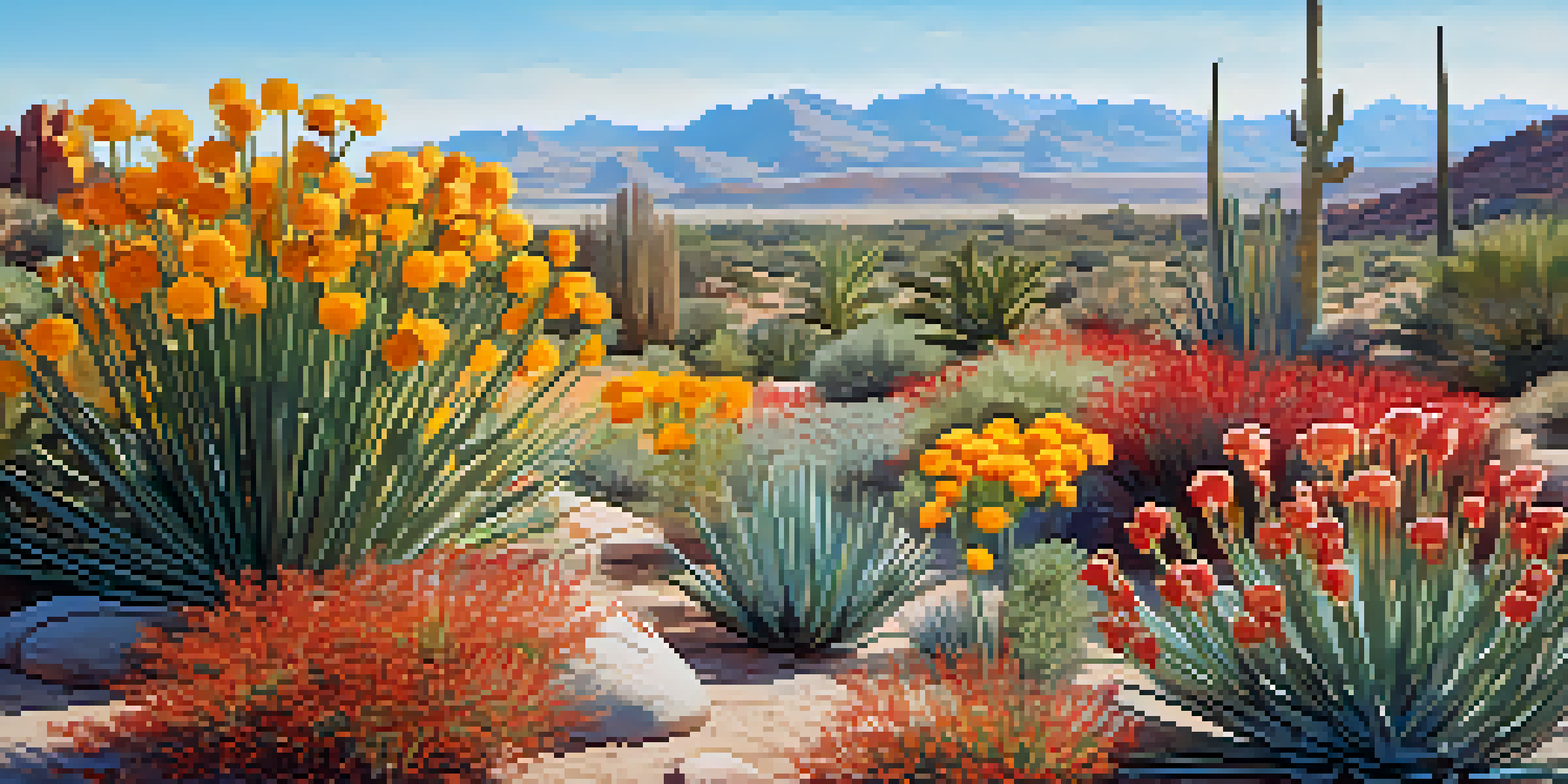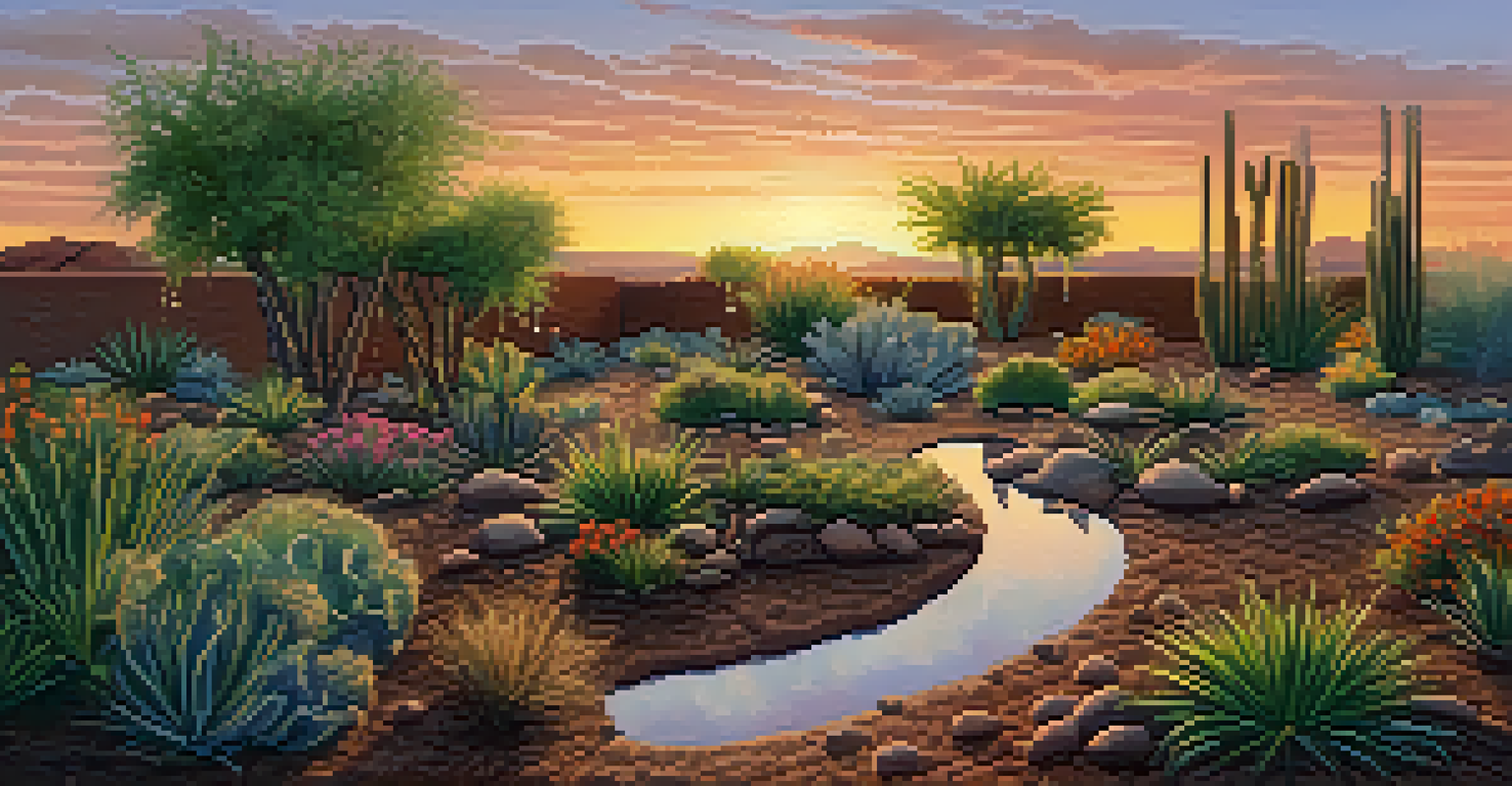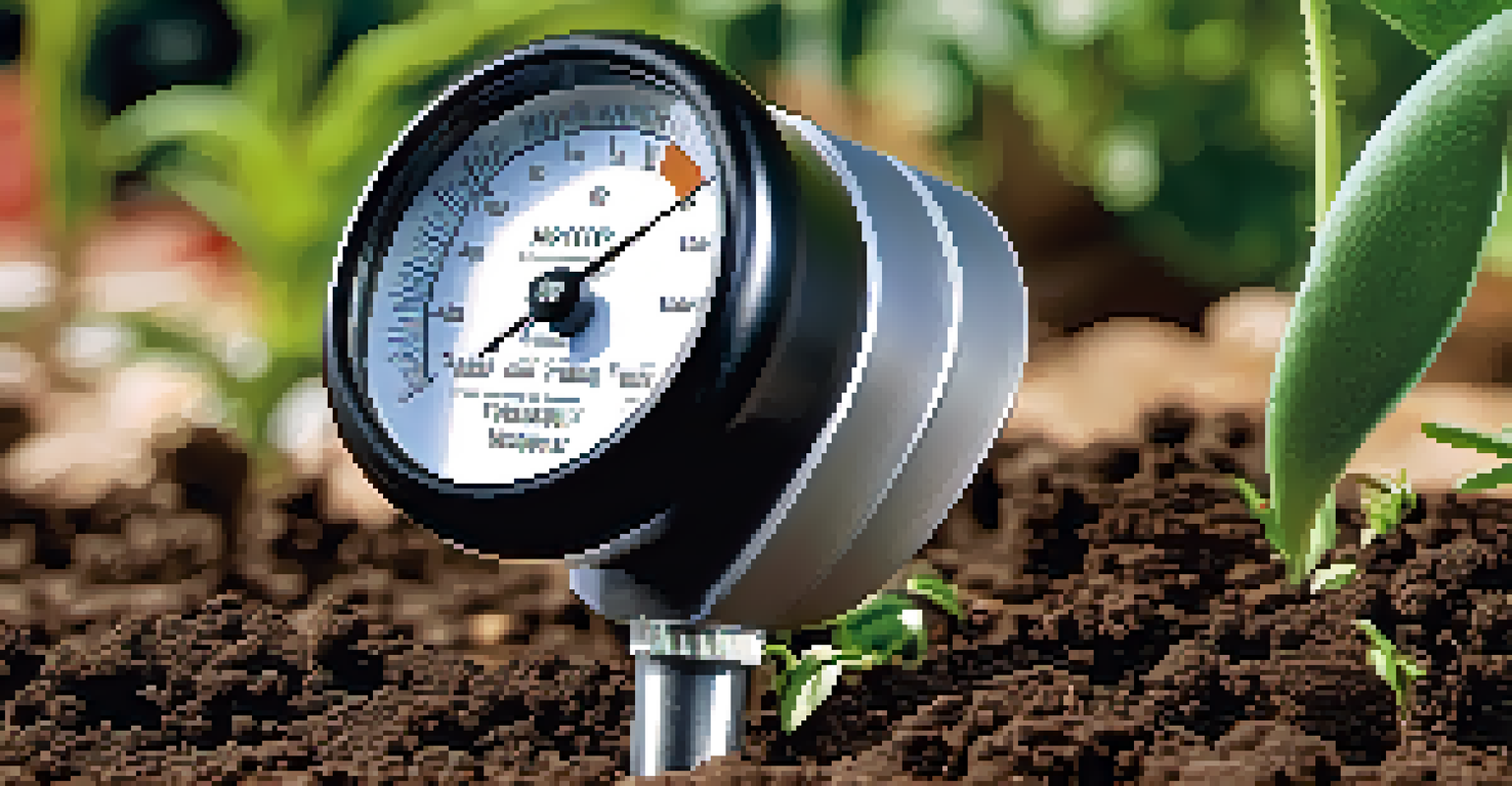Water-Saving Techniques for Phoenix Gardeners

Understanding Phoenix's Unique Climate for Gardening
Phoenix boasts a desert climate characterized by scorching summers and minimal rainfall, making efficient water use essential for gardeners. Understanding this environment helps in selecting the right plants and techniques for sustainable gardening. For instance, knowing that the growing season is shorter can influence plant choices and watering schedules.
Gardening is a way of showing that you believe in tomorrow.
Many gardeners in Phoenix face the challenge of balancing beauty with practicality. By selecting native and drought-tolerant plants, you can create a stunning garden that thrives even in the harshest conditions. This not only conserves water but also supports local wildlife and ecosystems.
Moreover, it's vital to recognize that traditional gardening practices may not work well in such arid areas. Adopting water-saving techniques can help ensure your garden flourishes while minimizing water waste.
Choosing Native and Drought-Resistant Plants
Opting for native plants is one of the smartest strategies for Phoenix gardeners. These plants are adapted to the local climate, requiring less water and maintenance than non-native species. Examples include desert marigold and red yucca, both of which are not only beautiful but also remarkably resilient.

Drought-resistant plants are another excellent choice, as they have evolved to survive with minimal water. Incorporating these into your garden can significantly reduce your water consumption while still providing vibrant colors and textures. Think of them as your garden's superheroes, ready to combat the dry conditions.
Embrace Native Plants for Success
Opting for native and drought-resistant plants can significantly enhance your garden's resilience and reduce water consumption.
In addition, creating a diverse plant palette can enhance your garden's resilience. Mixing various types of native and drought-tolerant plants can help ensure that if one species struggles, others may thrive, maintaining the garden's overall health.
Implementing Efficient Irrigation Techniques
Irrigation is a critical component of water conservation in gardening, especially in a dry climate like Phoenix. One effective method is drip irrigation, which delivers water directly to the plant roots, minimizing evaporation and runoff. This targeted approach not only saves water but also encourages healthier plant growth.
The best time to plant a tree was twenty years ago. The second best time is now.
Another technique is scheduling irrigation during the cooler parts of the day, such as early morning or late evening. This timing reduces water loss due to evaporation, ensuring more moisture reaches the plants. Imagine watering your plants just as the sun begins to set, giving them a refreshing drink without wasting a drop.
Lastly, consider using rain barrels to collect and store rainfall during the rare storms in Phoenix. This harvested water can be a valuable resource for your garden, further reducing your reliance on municipal water supplies.
Mulching for Moisture Retention
Mulching is a fantastic technique for conserving soil moisture and reducing the need for frequent watering. By spreading a layer of organic mulch, such as wood chips or straw, you can help keep the soil cool and damp. This not only benefits your plants but also suppresses weeds that compete for valuable water.
In addition to moisture retention, mulch can enhance soil quality as it decomposes over time. This organic matter enriches the soil, promoting healthy root development and overall plant vitality. It's like giving your garden a nutrient boost while also conserving water.
Utilize Efficient Irrigation Methods
Implementing techniques like drip irrigation and timing your watering can conserve water and promote healthier plant growth.
Furthermore, mulching can reduce the frequency of watering by up to 50%, depending on the mulch type and application. Imagine cutting your watering schedule in half while still enjoying a flourishing garden—what a win-win!
Creating a Water-Efficient Landscape Design
Designing your garden with water efficiency in mind can make a significant impact on conservation efforts. Grouping plants with similar water needs together, known as hydrozoning, allows you to tailor your irrigation practices more effectively. This means you can give each plant exactly what it needs without overwatering.
Incorporating hardscaping elements like pathways and patios can also help reduce the overall garden area that requires watering. Think of it as creating a beautiful oasis amidst the desert, where the focus is on low-water-use landscaping.
Additionally, using contouring techniques can help direct rainwater towards your plants, maximizing water usage. This method takes advantage of natural slopes and depressions in your yard, guiding precious water to where it's needed most.
Using Greywater Systems Safely and Effectively
Greywater systems can be an excellent way to recycle water from your home for garden use. This non-potable water comes from sources like sinks and showers, providing a sustainable option for irrigation. However, it's essential to follow local guidelines and regulations to ensure safety and compliance.
Setting up a greywater system may seem daunting, but it can be as simple as redirecting water from your laundry to your garden. This way, you can nourish your plants while reducing your overall water consumption. It's like giving your garden a second chance at life with every wash cycle.
Adjust Watering with the Seasons
Adapting your watering schedule based on seasonal changes ensures your plants receive the right moisture while minimizing waste.
Remember to avoid using harmful chemicals in your household products, as these can affect plant health. Opting for eco-friendly soaps and detergents ensures that your greywater is safe for irrigation, making your gardening efforts both sustainable and responsible.
Monitoring Soil Moisture Levels
Regularly monitoring soil moisture levels is crucial for effective watering in Phoenix gardens. Using a simple moisture meter can help you gauge when your plants truly need water, preventing overwatering and promoting healthier root systems. Imagine being able to 'listen' to your garden, responding to its needs with precision.
Another method is the finger test—simply sticking your finger into the soil to check moisture levels. If the top inch feels dry, it's time to water. This hands-on approach not only connects you with your garden but also fosters a deeper understanding of your plants' needs.

By staying attuned to soil moisture levels, you can optimize your irrigation schedule and further conserve water. This mindful approach transforms gardening into a more intuitive and rewarding experience.
Embracing Seasonal Adjustments for Watering
As the seasons change, so should your watering habits. Phoenix experiences significant temperature fluctuations, and adapting your watering schedule accordingly is vital for plant health. During the cooler months, plants may require less water, while the scorching summer heat can necessitate more frequent watering.
Monitoring weather patterns and adjusting your routine helps ensure that your garden receives the right amount of moisture. Keep an eye on forecasts, and be ready to alter your irrigation practices based on rain predictions or temperature spikes. It's like being a gardener and a weather forecaster rolled into one.
Additionally, seasonal adjustments can help prevent water waste, making your gardening more efficient. By staying proactive, you can enjoy a thriving garden year-round while conserving precious water resources.